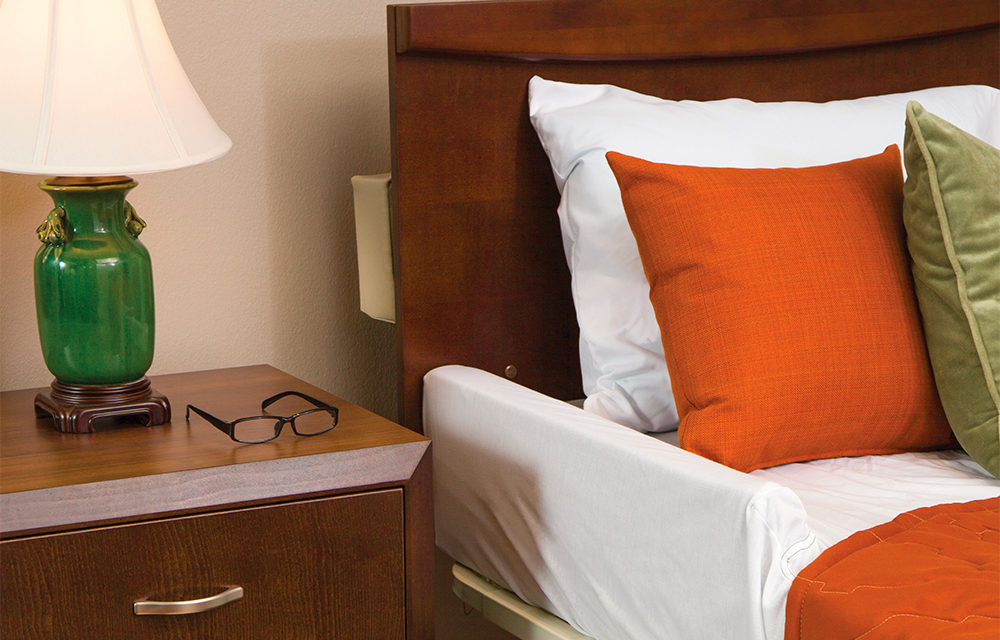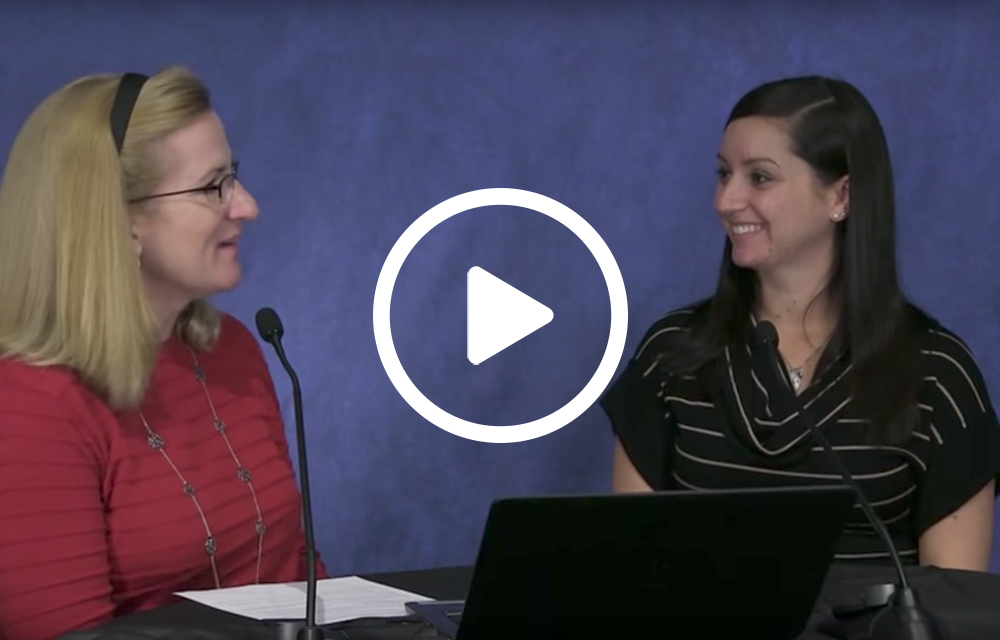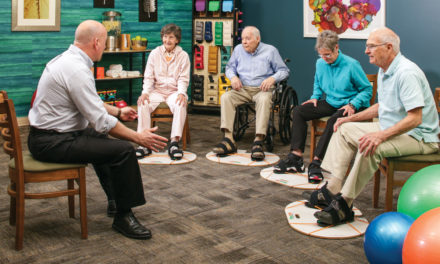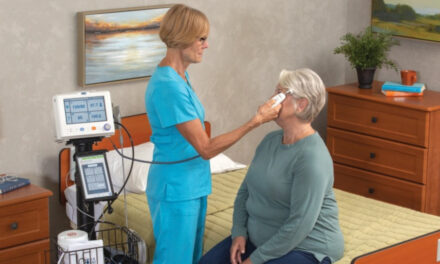With the implementation of Phase II of the Requirements of Participation in late November 2017, many Long Term Care providers are concerned about what types of products may or may not now be considered a physical restraint, specifically in reference to F604; 483.10 (e)(1).
Here we explore this F-Tag and its impact on two key product areas with Direct Supply Healthcare Equipment Product Consultant Kari Harbaugh. Kari draws on 12+ years of experience to help Senior Living care providers select equipment and products that best meet residents’ needs.
Understanding F604
F-Tag 604 states that the resident has the right to be free from any physical or chemical restraints imposed for purposes of discipline or convenience, and not required to treat the resident’s medical symptoms. First, let’s understand what a restraint is.
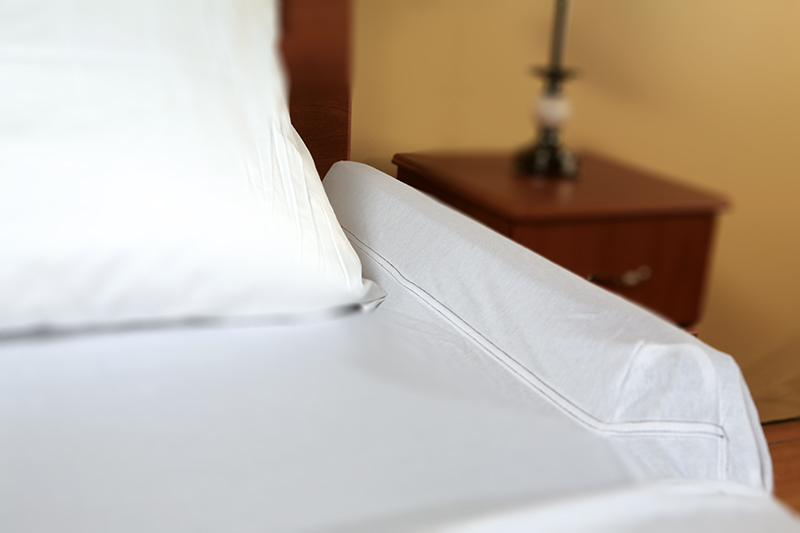
CMS defines a Physical Restraint as any manual method, physical or mechanical device equipment, or material that meets ALL of the following criteria:
- Is attached or adjacent to the resident’s body;
- Cannot be removed easily by the resident; and
- Restricts the resident’s freedom of movement or normal access to his/her body.
Further, a resident’s physical condition and his/her cognitive status may be contributing factors in determining whether the resident has the ability to remove it. Note that a device could be psychologically (but not physically) restricting a resident’s freedom of movement. In this case, the device could be considered a restraint.
To read surveyor guidance, see State Operations Manual, Appendix PP – Guidance to Surveyors for Long Term Care Facilities ».
Are bolstered or raised perimeter mattresses considered restraints?
In the case of a concave or raised perimeter mattress, it would be adjacent to a resident’s body and cannot be removed easily by the resident, which meets points 1 and 2 (see above) under CMS’s guidelines of what’s considered a restraint.
Point 3, however, would need to be evaluated for each resident and each mattress:
- If the mattress has a cutout in the middle of the raised perimeter for ingress and egress and the resident is able to get in and out of the mattress without the bolster restricting his or her movement, then the bolster would likely not be considered a restraint
- If the mattress does not have a cutout in the middle and the resident cannot get up and over the raised perimeter to exit the bed, then the bolster is restricting the resident’s freedom of movement and would likely be considered a restraint
- Now for the tricky part. If a mattress does have a cutout for egress, it would likely be considered a restraint if the raised bolster is restricting the resident’s freedom of movement. Conversely, if a raised perimeter mattress does not have a cutout for ingress and egress, but it is in no way restricting the resident’s freedom of movement, it would likely not be considered a restraint
Browse our full selection of mattresses or learn more about mattress types with Direct Supply’s mattress selection guide ».
Are bedrails and assists considered restraints?
In the case of bedrails, they would be adjacent to the resident’s body and cannot be removed easily by the resident, which meets points 1 and 2 (see above) under CMS’s guidelines of what’s considered a restraint.
Point 3, however, would be dependent upon each resident and each bedrail:
- The use of partial bedrails may assist an independent resident to enter or exit the bed independently; if the partial bedrail is not restricting the resident’s movement, it would likely not be considered a physical restraint
- If the resident cannot get past or around the rail to exit the bed, then the rail is restricting the resident’s freedom of movement and would likely be considered a restraint
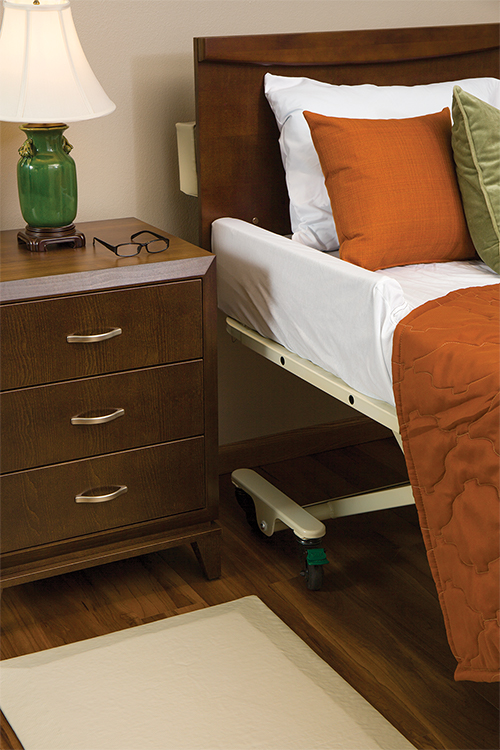
Browse a wide selection of beds, rails and assists to find solutions for your community.
Resident-centered care: assess, assess, assess
F604, just like many of the changes in the new CMS guidance, focuses on resident-centered care. A solution that may be considered a restraint for one resident may not be one for the next. Similarly, a resident who has experienced a change in mobility or health may find that solutions which weren’t restraints in the past are now restricting him or her. Your staff should continually assess and reassess residents’ needs and abilities to be sure the products they are using are suited for each particular resident each and every day. They may need to try multiple options to determine what would be the safest and most useful solution for each resident. Be sure to document the results of each assessment in the care plan so everyone is aware of the steps taken and any and all alternatives that are attempted for that resident.
Contact us to find solutions for your unique community.
Learn more about providing quality care amidst rapid regulatory change:
